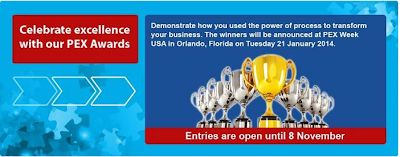Part of the Process Miracle course >

I also want to touch on the hurdles these companies using OI as their route to customer-centricity faced or are facing. While achieving customer-centricity is a noble goal even a necessity for many companiesit’s not easy. It requires transformational change.
On the flip side, sticking to incremental change doesn’t get you there. Not even close.
Amazon.com may have achieved Jeff Bezos’s dream of becoming the world’s most
customer-centric company. And Amazon had the advantage of starting from
scratch with nothing preexisting in the way, except for a pervasive business
culture that believes companies went broke by trying to be too nice to
customers and became successful by rigorous cost control and a laser-like
focus. But Bezos understood the comfort level customers would feel with
Amazon sourcing whatever they need to buy (almost) instead of dealing with
scores of online merchants, including some not trustworthy. He also
understood that the best way to keep customers is by continually finding new
ways to offer them value. These were hardly popular concepts when he started
Amazon. And for straying from conventional “wisdom,” Bezos and Amazon took a
pounding from pundits and analysts before proving them wrong.
Best Buy senior execs banked on their understanding of how customers really
wanted to buy electronics.
Best Buy made a major shift from a “cash and carry” electronics discounter
to a combined product/service provider that supports every facet of
customers enjoying high-tech electronics, with some appliances thrown in for
good measure. To get there, Best Buy had to re-staff the stores with better
trained, higher paid employees; bring in substantial new management
expertise, redesign stores from the ground up, go to store plans that flexed
with local demographics and take a huge financial risk on a then untested
concept of “higher touch” electronics retailing. Best Buy senior execs
banked on their understanding of how customers really wanted to buy
electronics. Customers rewarded them by leaving competitors in droves, until
the two primary U.S. competitors collapsed.
Fed-X has been an Outside-In company from the day the first Dassault Falcon
flew off from Memphis back in 1971, and it has reaped the rewards. But in
1998 Fed-X chose to break its own air courier business model by acquiring
the parent of both Roadway trucking and RPS (Roadway Parcel Express, formed
to compete against UPS). The customer problem the acquisition solved was
visible every day at hundreds of thousands of shipping docksone pile of
small parcels for priority air shipping by Fed-X; a 2nd pile of small
parcels for routine ground shipping by UPS; and a 3rd pile of larger
shipments, including single packages over 60lbs., to be picked up by various
LTL (less-than-truckload) carriers that serviced varying city pairs.
For logistics managers this meant: multiple types of waybills and manifests
to complete; multiple tracking systems (or no tracking); angst and errors
from trying to price shipments to attach shipping charges to invoices; and
three different pick-up vans, often jockeying for space at a single loading
dock at the same time. But once Fed-X melded the three service into one,
logistics could have just one pile of shipments for ground and air,
including packages up to 150lbs.
UPS, a totally inside-out company at the time, never saw the opportunity,
despite seeing the three piles every day, because they were seeing the piles
from their point of view, not the customer’s.
All these cases represent achieving customer-centricity through
transformational change from inside-out business practicesplus, overcoming
inertia and defying yet more conventional “wisdom.” In the CRM space,
there’s a pejorative term, “boiling the ocean,” to describe asking companies
to change too much. Supposedly, attempting “excessive” change leads to
certain failure and death by firing squad. Yet any company striving to
achieve customer-centricity has to switch from the inside-out perspective to
Outside-In. And that takes “boiling the ocean.”
Feeling the urgency for change will help some companies clear the hurdles.
Not feeling the urgency for change will cause others to take face plants on
the trackor wither away at the starting blocks.
Reactive cases
UPS was forced Outside-In (or else it would have gone upside down) by
Fed-X’s ground transportation acquisition. For an extraordinarily routinized
and standardized company, that meant adopting a new business model requiring
disruptive process change.
More recently, Sprint was on the slippery slope, put there by inside-out
thinking, including deplorable customer service. Its new CEO is taking an
Outside-In view of the business to try to dig out of the hole. Too late?
Maybe, maybe not. Forgiveness doesn’t always come easy. Sometimes it doesn’t
come at all.
And speaking of forgiveness, General Motors is struggling for life after
bankruptcyand trying to overcome an almost impermeable inside-out culture.
Getting to Outside-In is a prerequisite for winning back customer trust. So
far, reports coming out of GM have been mixed.
What are you waiting for?
Sure Outside-In takes work. But don’t wait for an industry competitor to go
there first. Forced change is so much harder than proactive change. And
don’t wait until it’s too late and suffer the ultimate change. The
Outside-In train is leaving the station, likely populated by a competitor or
two or four. It’s time you hopped on board for the journey to Outside-In.











